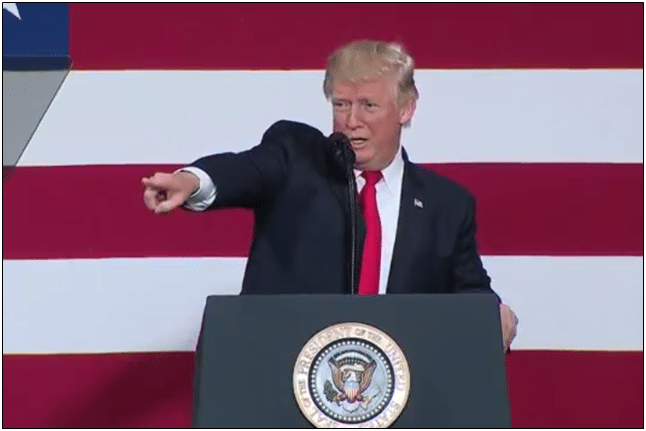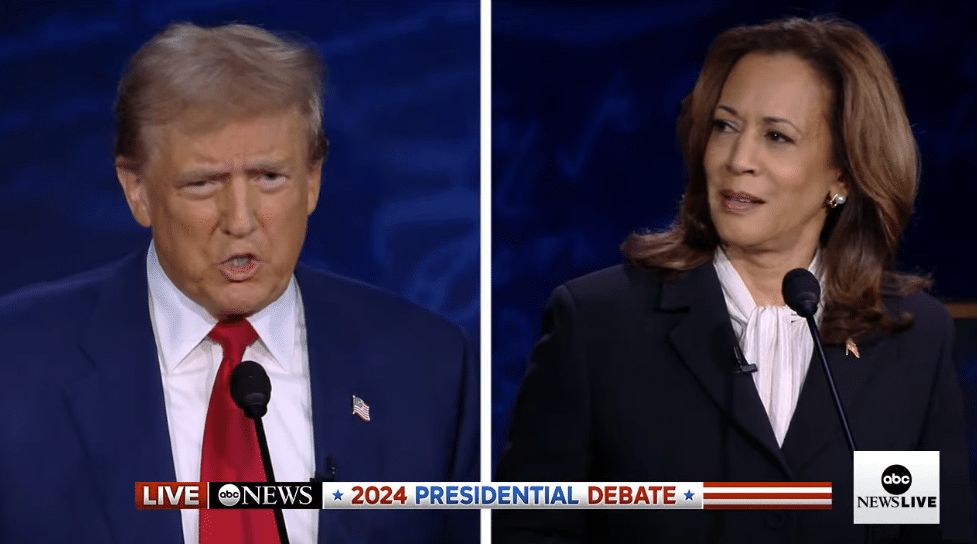
October 25, 2024
Permission to republish original opeds and cartoons granted.
Polls are Probably Still Underestimating Trump Because He Continues to Appeal to Americans who Are Less Political
| 
|
|
One of the largest takeaways from Trump’s unexpected success in 2016 – and the inability of pollsters to accurately predict the support he earned in both 2016 and 2020 – is that Trump has continuously appealed to Americans who are less politically engaged. Adding to the issue, is that Americans with lower political engagement are also generally harder to recruit into political surveys to share their opinions. We see this theme repeatedly, with low propensity voters, especially first-time voters, being much more likely to support Trump than highly active voters. At the same time, lower frequency voters are much harder to reach in polls before election day. What is interesting, is that most Americans are not highly active voters. In fact, analysis from the New York Times this spring before Biden dropped out of the race showed that if all eligible Americans voted, Trump would benefit. As a small but illustrative example, Lancaster County in Pennsylvania is seeing an uptick in Trump support in the Amish community – a generally insular group that rarely participates in elections. Conservative groups are working to get hundreds of first-time Amish voters registered in the weeks before the election, and most appear to plan to vote for Trump. The uptick in first-time Amish voters may be a Pennsylvania-specific example Amish are both less traditionally engaged in politics and more likely to lend their support to Trump when they do engage. And it is other voters like them who are also more likely to support Trump, even if they do so quietly and at the ballot box. |
Polls TIED: As Trump catches Harris nationally, all eyes look toward the swing states of PA, MI, WI, NC, GA and AZ
| 
|
|
Former President Donald Trump has caught up to Vice President Kamala Harris in the latest average of national polls compiled by RealClearPolling.com, which show Trump tied with Harris nationally in both the two-way race, 48.4 percent to 48.4 percent, and the multi-candidate race, 47.5 percent to 47.5 percent. For comparison, in the closing days of both 2016 and 2020, Trump trailed by Hillary Clinton and President Joe Biden significantly in the averages, by 3.2 points and 7.2 points, respectively. Both times, the polls had inaccurately overstated what the Democrats’ margin in the popular vote really would be, by 1.1 points in 2016 and 2.7 points in 2020, a 1.9 percent average. If the same thing happens in 2024, with the polls tied, that might mean that Trump could become the first Republican to win the national popular vote since George W. Bush did so in 2004, with major implications also down the ballot with the U.S. House and Senate up for grabs. No Republican has ever lost the Electoral College while winning the popular vote, but it’s happened to Democrats five times in U.S. history. But, the U.S. obviously does not decide who is the president by who wins the popular vote, it is decided by the Electoral College, where a majority of votes based on proportional representation for each state determines the winner. Here, too, Trump is faring quite well in the current state polls: on average leading Arizona by 1.9 points, Nevada by 0.7 points, Wisconsin by 0.2 points, Michigan by 0.2 points, Pennsylvania by 0.6 points, North Carolina by 0.8 points and Georgia by 2.2 points. And similarly, in 2016 and 2020, polls that looked at the state races similarly overstated Democrats’ support. In fact, Trump has never done so well in the polls, so is history repeating itself? |
Senate Race Secrets Revealed by Top Political Analyst!
| 
|
|
The Senate Race Secrets have been revealed, and in this video, a top political analyst breaks down everything you need to know. From unexpected polling trends to hidden campaign strategies, we expose the factors that could decide the Senate’s future. |
Polls are Probably Still Underestimating Trump Because He Continues to Appeal to Americans who Are Less Political

By Manzanita Miller
One of the largest takeaways from Trump’s unexpected success in 2016 – and the inability of pollsters to accurately predict the support he earned in both 2016 and 2020 – is that Trump has continuously appealed to Americans who are less politically engaged.
Adding to the issue, is that Americans with lower political engagement are also generally harder to recruit into political surveys to share their opinions. We see this theme repeatedly, with low propensity voters, especially first-time voters, being much more likely to support Trump than highly active voters. At the same time, lower frequency voters are much harder to reach in polls before election day.
What is interesting, is that most Americans are not highly active voters. In fact, analysis from the New York Times this spring before Biden dropped out of the race showed that if all eligible Americans voted, Trump would benefit. In other words, if “democracy worked”, and all eligible Americans with opinions about the direction of the country participated, they would elect Trump.
Of course, being popular among those who don’t often vote can be a double-edged sword – if conservative-leaning Americans sit out this election too, then their ideological support isn’t going to translate to political power.
However, Trump leads among those who only vote in presidential elections and skip primaries and midterm elections. The reality is that low propensity voters coming out in vast numbers for Trump is a key reason why pollsters simply could not gauge how deep his support went in previous elections. And we are seeing similar signs and signals of first-time and low propensity voter support for Trump again this year.
According to the New York Times’ detailed analysis of active versus infrequent voters from this spring before Kamala Harris became the nominee, while Biden led among highly engaged voters, Trump led among Americans who vote infrequently.
Biden led among highly active voters who participated in the primaries by five points, 49 percent to 44 percent.
However, among Americans who haven’t voted since 2020, Trump led by two points, 44 percent to 42 percent. And among Americans with no history of participation at all, Trump leads by 14 points, 49 percent to 35 percent. Because there are many more Americans who are infrequent votes than there are who are highly active, it is Trump, not his opponent, who would benefit the most from an influx of infrequent voters.
That is why the New York Times concluded in their analysis, “In a reversal of one of the most familiar patterns in American politics, it appears that Donald J. Trump, not President Biden, would stand to gain if everyone in the country turned out and voted.” What the Times went on to add is that in the past, it has been Democrats who most benefited from low-engagement voters, with former President Barack Obama drawing vast support from young and minority voters who didn’t usually vote.
This is no longer the case. As Democrats have abandoned the middle class, low engagement voters have become increasingly disengaged from Democrats specifically, and now Trump is the beneficiary of adding these voters into the voter pool. We have seen this illustrated in Trump’s increases with minority voters and young men, groups that tend to lag behind in political participation but are becoming more Trump-friendly.
As a small but illustrative example, Lancaster County in Pennsylvania is seeing an uptick in Trump support in the Amish community – a generally insular group that rarely participates in elections. Conservative groups are working to get hundreds of first-time Amish voters registered in the weeks before the election, and most appear to plan to vote for Trump.
Steven Nolt, a professor of history and Anabaptist studies at Elizabethtown College who studies Amish voting patterns, told The Times UK that he believes more Amish will vote this year, and that Amish generally vote overwhelmingly Republican when they do vote. “Anecdotally, I have no doubt that more Amish folks will vote this year than have in the past”, Nolt said. “The outreach to them is the strongest it’s been for years and that has an effect. Amish vote overwhelmingly Republican, so there may be a few thousand more votes for Trump there.”
In a state that Biden won with less than 80,000 votes, if a sizeable share of the 90,000 or so Amish end up voting for Trump, first-time Amish voters could play a crucial role in Pennsylvania.
The uptick in first-time Amish voters may be a Pennsylvania-specific example, but it speaks to Trump’s support among Americans who generally avoid politics. From another lens, who believes that Amish are answering CNN’s polls to share their vote intention for November? Amish are both less traditionally engaged in politics and more likely to lend their support to Trump when they do engage. And it is other voters like them who are also more likely to support Trump, even if they do so quietly and at the ballot box.
Manzanita Miller is the senior political analyst at Americans for Limited Government Foundation.
To view online: https://dailytorch.com/2024/10/polls-are-probably-still-underestimating-trump-because-he-continues-to-appeal-to-americans-who-are-less-political/
Polls TIED: As Trump catches Harris nationally, all eyes look toward the swing states of PA, MI, WI, NC, GA and AZ

By Robert Romano
Former President Donald Trump has caught up to Vice President Kamala Harris in the latest average of national polls compiled by RealClearPolling.com, which show Trump tied with Harris nationally in both the two-way race, 48.4 percent to 48.4 percent, and the multi-candidate race, 47.5 percent to 47.5 percent.
For comparison, in the closing days of both 2016 and 2020, Trump trailed by Hillary Clinton and President Joe Biden significantly in the averages, by 3.2 points and 7.2 points, respectively.
Both times, the polls had inaccurately overstated what the Democrats’ margin in the popular vote really would be, by 1.1 points in 2016 and 2.7 points in 2020, a 1.9 percent average.
If the same thing happens in 2024, with the polls tied, that might mean that Trump could become the first Republican to win the national popular vote since George W. Bush did so in 2004, with major implications also down the ballot with the U.S. House and Senate up for grabs. No Republican has ever lost the Electoral College while winning the popular vote, but it’s happened to Democrats five times in U.S. history.
But, the U.S. obviously does not decide who is the president by who wins the popular vote, it is decided by the Electoral College, where a majority of votes based on proportional representation for each state determines the winner.
Here, too, Trump is faring quite well in the current state polls: on average leading Arizona by 1.9 points, Nevada by 0.7 points, Wisconsin by 0.2 points, Michigan by 0.2 points, Pennsylvania by 0.6 points, North Carolina by 0.8 points and Georgia by 2.2 points.
And similarly, in 2016 and 2020, polls that looked at the state races similarly overstated Democrats’ support, with a lone exception being Pennsylvania in 2020.
In 2016, in Pennsylvania, the average of polls said Clinton would win by 2.1 points, but Trump won by 0.7 points.
In Michigan, Clinton was supposed win by 3.6 points, but Trump won by 0.3 points.
And in Wisconsin, Clinton was supposed to win by 6.5 points, but Trump won by 0.7 points.
In 2020, in Pennsylvania, again, Biden was supposed to win by 1.2 points, and that is what happened on when all the votes were counted.
But in Michigan, once again, Biden was supposed to win according to the polls by 4.2 points, but the final margin was 2.8 points.
And in Wisconsin, Biden was supposed to win by 6.7 points, but the final margin was 0.7 points.
So, the last two cycles, polls in Pennsylvania are on average tilted towards Democrats by 1 point, in Michigan by 2.65 points and in Wisconsin by 6.6 points. If that happens again, Nov. 5 could be a very good day for Trump.
With all these factors and others in mind, election forecaster Nate Silver is overall giving Trump a 53.7 percent chance of winning the election. And if the popular vote is less than two points in favor of Harris, the odds rise to a 73.8 percent chance of a Trump win. If it’s less than one point, as the polls suggest, Trump’s odds of winning rise to 91.9 percent. And if Trump were to win the popular vote, his victory would be virtually guaranteed at 98.4 percent.
Suffice to say, Trump has never polled so well. Are polls overstating his support? Or could it mean it mean that the so-called shy Trump voter has finally been identified by pollsters after eight years? If so, then 2024 promises to be a very close race. Or, if polls are once again understating Trump’s support American and the world might once again be in for a shock on Election Day with a Trump victory. As usual, stay tuned.
Robert Romano is the Vice President of Public Policy at Americans for Limited Government Foundation.
To view online: https://dailytorch.com/2024/10/polls-tied-as-trump-catches-harris-nationally-all-eyes-look-toward-the-swing-states-of-pa-mi-wi-nc-ga-and-az/
Senate Race Secrets Revealed by Top Political Analyst!

Watch Now: https://youtu.be/0XpTvb1MRIQ
